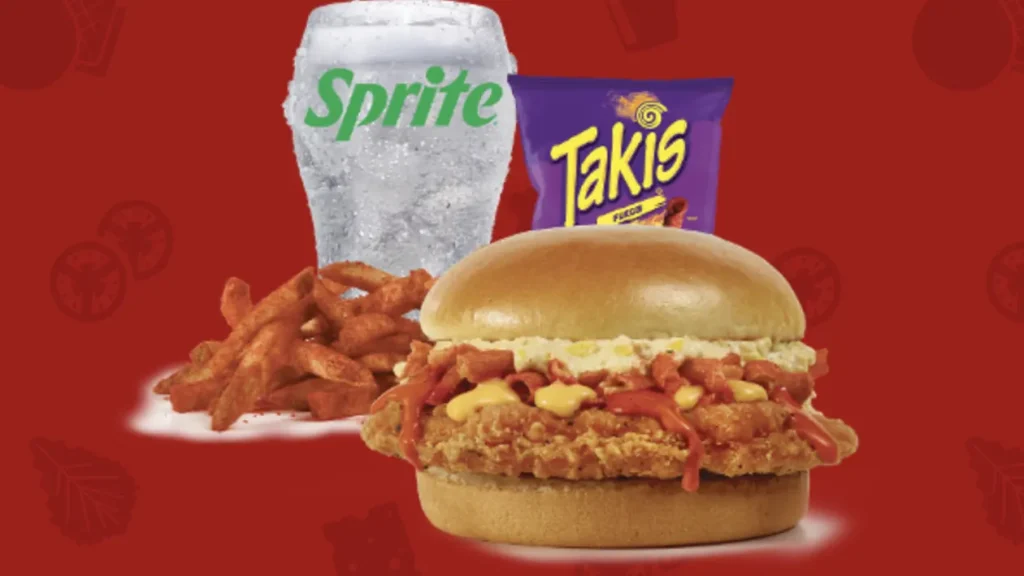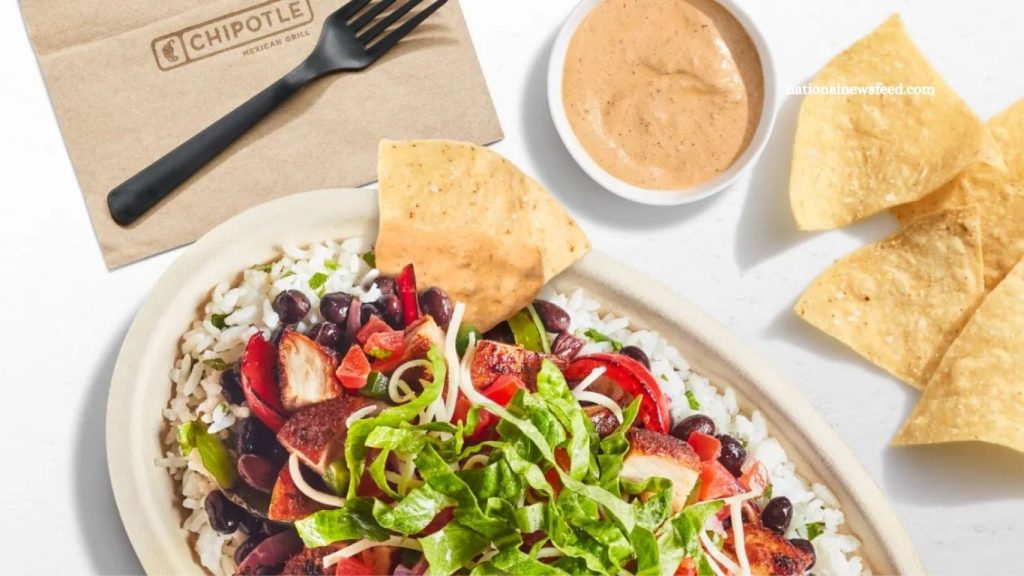Restaurant chains across the U.S. are turning up the heat—literally—to win over younger consumers. From fast-casual eateries to major quick-service brands, spicy food is no longer just a seasonal trend. It’s a strategic move to spark interest, drive traffic, and reignite sales in a tighter economic climate.
Spice: A Bold Strategy in a Competitive Market
With U.S. consumers planning to cut restaurant spending by 7% this summer, according to KPMG’s Consumer Pulse survey, restaurants are being forced to innovate without inflating costs. Spicy menu items offer the perfect solution—affordable to produce, easy to market, and packed with attention-grabbing flavor.
“Spice is a low-cost, high-return way to re-engage customers,” said Gregory Francfort, lead restaurant analyst at Guggenheim Securities. He noted that chains are becoming more aggressive with marketing calendars, launching new products to keep diners interested and engaged.
Read More: JFK Airport’s $9.5B International Terminal: Inside the Transformation
The Surge in Spicy Offerings
Between March and June, U.S. restaurants introduced 76 new spicy menu items, according to data from market research firm Datassential. These included both permanent additions and limited-time offers, making up about 5% of all new items released in that timeframe. Currently, around 95% of restaurants feature at least one spicy dish on their menu.
Major players like Chipotle, Taco Bell, Wendy’s, and Cava are leading the charge with inventive takes on spicy flavor.
In June, Chipotle launched Adobo Ranch, its first new dip in five years, promoted as a limited-time offer. “From an operations perspective, the sauce is a lot easier to do than bringing in another LTO or another protein,” said Chris Brandt, Chipotle’s chief brand officer. “And you get a lot of the same benefit.”
Cava, a Mediterranean fast-casual chain, is embracing spice with its Hot Harissa Pita Chips, Harissa Avocado Bowl, and Harissa Honey Chicken. “They’re not looking for bland or predictable,” said Cava’s co-founder, Ted Xenohristos. “They want strong flavors.”
Wendy’s joined the trend in June by collaborating with Takis to offer the Takis Fuego Meal, featuring its signature spicy chicken sandwich and Takis-flavored fries.
Meanwhile, Taco Bell spiced things up with two major launches: the Caliente Cantina Chicken Menu in February and a Mike’s Hot Honey Diablo Sauce collaboration in May.
Why Gen Z and Gen Alpha Are Driving the Heat
Restaurants are tailoring these spicy innovations to younger audiences—specifically Gen Z and Gen Alpha. These generations, spanning roughly ages 10 to 30, crave bold, global, and adventurous flavors.
A survey by Sprite revealed that up to 50% of Gen Z consumers eat at least one spicy meal per week. Their diverse palates and global exposure are pushing restaurants to go beyond generic “hot” and explore international spice blends.
Chili Crisp from China, Nam Phrik from Thailand, and Piri Piri from Africa and Portugal are just a few globally inspired flavors finding their way onto U.S. menus. These options speak to younger consumers’ desire for food with depth, authenticity, and cultural relevance.
“Younger generations are fueling the spicy trend,” a Wendy’s spokesperson said. “They want bolder, more adventurous flavors.”
The Role of Social Media in Driving Spicy Trends

Platforms like TikTok and Instagram are turning spicy foods into viral sensations. Reaction videos, spicy challenges, and influencer-led taste tests fuel curiosity and create urgency, particularly when brands introduce limited-time offers.
“Spicy food consistently performs well,” said TikTok food influencer Tommy Winkler. “It is essentially the new billboard.”
In June alone, the term “spicy” was mentioned over 40,000 times across online platforms, according to Datassential, with peaks aligning closely with product launches.
Sprite, a Coca-Cola-owned brand, seized the moment with its Hurts Real Good campaign in July. The initiative partnered with McDonald’s, Buldak Fried Noodles, and Takis to promote Sprite as the ultimate drink to pair with spicy food. It included a TikTok filter and a suite of digital activations targeting younger audiences.
“A huge portion of Gen Z try their first Sprite at McDonald’s,” said Oana Vlad, global VP for Sprite. “You can see fans describing Sprite at McDonald’s as a flash of lightning or electric.”
Sprite’s positioning taps directly into social culture, including mukbangs—live broadcasts where hosts eat large portions of food—and spicy noodle challenges. These viral moments keep spicy foods at the center of online dining culture.
The Short Shelf Life of Spicy Trends
While spice sells, staying relevant is a moving target. Younger consumers are notoriously fast to adopt trends—and even quicker to drop them. Flash favorites like “sweet and spicy” and “Nashville Hot” are already seeing declining interest, according to Datassential.
To maintain engagement, brands are increasingly rotating new spice-forward concepts. This helps maintain novelty and keeps consumers checking back for what’s new.
Restaurants are also looking globally for inspiration. As Gen Z and Gen Alpha explore international cuisines, flavors rooted in specific cultures—like Sichuan peppercorn or gochujang—offer deeper storytelling opportunities and culinary credibility.
Frequently Asked Questions
Why are restaurants focusing on spicy foods right now?
Restaurants are adding spicy menu items to attract younger diners like Gen Z and Gen Alpha who crave bold, adventurous flavors. Spice is also a cost-effective way to refresh menus, generate buzz, and drive customer engagement.
What age groups are most drawn to spicy food?
Gen Z (roughly ages 10–25) and Gen Alpha (under 10) are the primary drivers of the spicy food trend. These generations grew up with more exposure to global cuisines and tend to prefer bolder, more exciting flavors.
What are some examples of spicy items being added to menus?
Popular spicy additions include Chipotle’s Adobo Ranch, Cava’s Harissa Honey Chicken, Wendy’s Takis Fuego Meal, and Taco Bell’s Caliente Cantina Chicken. Many restaurants are also experimenting with spicy dips, sauces, and globally inspired hot seasonings.
Are spicy menu items just a trend or a long-term strategy?
While spicy food has trend-driven moments, it’s also becoming a long-term menu strategy. As younger generations age and continue influencing food culture, restaurants are likely to keep spicy options as a permanent part of their offerings.
How do spicy menu items benefit restaurants financially?
Spicy items are affordable to make, often require fewer new ingredients, and generate social media buzz that increases foot traffic and sales. They offer a high return on investment without major changes to kitchen operations.
What role does social media play in the popularity of spicy food?
Social media platforms like TikTok amplify spicy food trends through viral challenges, influencer reviews, and user-generated content. This creates a sense of urgency and encourages diners—especially young ones—to try limited-time spicy offerings.
Are these spicy foods too intense for the average diner?
Not necessarily. Many restaurants offer customizable spice levels or balance heat with sweet or creamy elements. The goal is to appeal to adventurous palates without alienating less spice-tolerant customers.
Conclusion
As dining trends evolve, spice is emerging as more than just a taste preference—it’s a smart business move. By introducing bold, flavorful, and globally inspired spicy menu items, restaurants are capturing the attention of Gen Z and Gen Alpha, two demographics shaping the future of food.
From increased social media engagement to repeat visits driven by limited-time offers, spice delivers both flavor and financial impact. For restaurants looking to stay relevant and competitive, turning up the heat might just be the key to long-term growth and customer loyalty.

